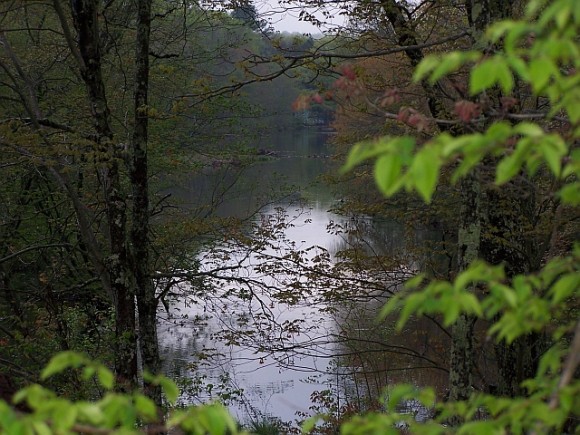
The only remaining dam on the East Branch of the Eightmile River will come down as part of a river restoration project led by The Nature Conservancy and American Rivers.
Construction activities will remove the nearly 80-year-old Ed Bills Pond Dam and restore a natural river channel. The restored site will be ready for the return of migratory fish next spring. The project will provide habitat for such native species as brook trout, turtles, and mussels, as well as migratory alewife, blueback herring, Atlantic salmon, American eel and sea lamprey—all also native species.
“Connecticut has more than 5,000 dams. Most of these dams no longer serve their original purposes, yet they unfortunately still prevent fish from reaching spawning habitat critical to their survival. Projects like this one allow us to help change that and restore natural river conditions,” said Amy Singler, who is managing the project for the Conservancy and American Rivers.
The Ed Bills Pond Dam is near the mouth of the East Branch of the Eightmile River on Salem Road. While the project will be visible from Salem Road, the dam is on private land. For the purpose of safety, public access is restricted. The public will be able to see photos as the project progresses and learn more about it at Facebook.com/CT.NatureConservancy and Facebook.com/AmericanRivers.
The dam is privately owned, and the dam owner is working closely with local and regional project partners to advance river restoration.
Funding partners include The Nature Conservancy, American Rivers, the Connecticut Department of Energy and Environmental Protection, the National Oceanic and Atmospheric Administration, the U.S. Fish and Wildlife Service, the National Fish and Wildlife Foundation’s Long Island Sound Futures Fund, Newman’s Own Foundation, Patagonia, Corporate Wetlands Restoration Partnership, and many generous private donors.
The project will remove the dam and existing fish ladder in order to restore unrestricted natural river conditions through the area flooded by the dam, resulting in access to 9.7 miles of free- flowing river.
Like so many Connecticut Rivers, the East Branch of the Eightmile River has been dammed for more than 100 years; however, the dam being removed was built as recently as the 1940s for aesthetic and recreational purposes. The location of the fish ladder entrance at the dam is not optimal to allow passage of significant numbers of migratory fish.